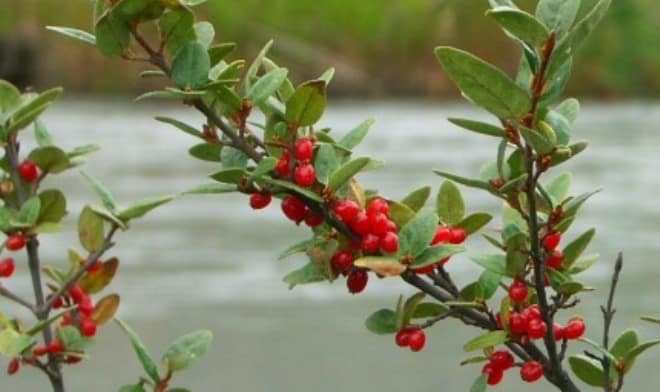It is easy to see where soapberries get their name. When placed in water and whipped, they begin to froth, making a soap-like foam. The berries are whipped and mixed with a small amount of sweetener and served as a traditional First Nations dish called “Indian ice cream.” This dish is a bitter, tangy foam with a strong, sour bite. It tastes nothing like ice cream, but is still served as a dessert-like treat after many First Nations feasts. The First Nations people of British Columbia have been harvesting these little red berries for centuries, and they have historically been traded with neighboring tribes.
Soapberries grow on shrub plants with oval leaves and can grow up to 2 meters tall. As the soapberries mature, they take on a translucent red color.
Stories about the importance of soapberries in indigenous culture have been passed down through generations from the tribal elders. The berries are often used during feasts and family gatherings, served on special dishes and eaten with special spoons. They are also considered a playful dish; during celebrations the foam dessert is sometimes thrown in the manner of a food fight.













